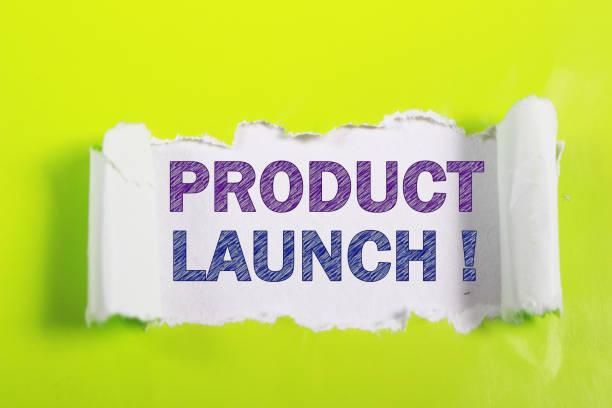Notifications

8 minutes, 10 seconds
-19 Views 0 Comments 0 Likes 0 Reviews

Let’s say you’ve got an idea. A brilliant one. Maybe it is a smart water bottle that reminds you to hydrate, or a kitchen system that chops, stirs, and tells you when your onions are caramelised to perfection.
But before you start having a pipe dream approximately viral TikTok repute or your first 5-star assessment, there's an important step you surely can't skip: prototyping.
Now, if you’re exploring the best way to launch a product on Amazon, chances are you've heard terms like “mechanical prototype” and “electrical prototype” thrown around. And let’s be real — if you're not from an engineering background, those can sound like interchangeable jargon.
Spoiler alert: they’re not.
Let’s break it down in plain language.
Mechanical prototyping is all about physical form and function. This is where you figure out what your product looks like, how it moves, what it feels like in the hand, and how its parts fit together. It’s tactile. Tangible. Sometimes frustrating.
Think hinges, gears, casings, buttons, levers. The stuff you can touch.
If your product has a moving part, a lid, a spring, or even just a body that needs to snap together without falling apart — welcome to the mechanical world.
Let’s take an example. You're building a foldable phone stand. You need it to:
Hold a phone securely,
Fold flat into a pocket,
Be durable (but lightweight),
Look slick on a desk.
That’s all mechanical engineering.
Your mechanical prototype might start with a simple 3D print. Maybe it’s just foam core and glue at first. Doesn’t have to be pretty — just needs to work. You’ll test it, break it, reprint it, maybe curse at it. Rinse and repeat.
While mechanical prototyping is about how your product moves and feels, electrical prototyping is about how it thinks and acts. It’s the invisible magic inside.
Electrical prototyping covers everything from circuits and sensors to batteries and microcontrollers. This is where your product gains “smarts.”
Let’s go back to that smart water bottle idea. It needs to:
Know when it's been moved,
Light up to remind you to drink,
Connect via Bluetooth to an app.
Guess what? None of that happens without a solid electrical prototype.
You’ll be fiddling with Arduino boards, soldering wires, choosing the right type of battery, and testing signal range. It’s messy, sometimes finicky, and often unintuitive — but worth it when your bottle lights up for the first time like a proud firefly.
Yep. In most cases, you’ll need both types of prototyping to get to a fully functional version of your product.
That doesn’t mean you have to do both at the same time. It’s usually smarter to start with one, validate a few assumptions, and then move on.
If your product relies more on physical utility (like a mechanical toothbrush or an ergonomic bottle opener), you’ll start mechanically. If it’s driven by tech (like a smart home device or a fitness tracker), electrical prototyping might come first.
But eventually? You’ll need them to work together like a well-rehearsed duet.
Once you've nailed down the physical structure and the electronics, it’s time to combine them into one cohesive unit. That’s your working prototype. And trust me — when you finally hold it in your hand, working as intended, it feels damn good.
But here’s where a lot of makers hit a wall: now what?
Sure, you’ve got the prototype. But how do you turn this Frankenstein-looking (but functional!) thing into a polished product people want to buy?
This is where product launch consulting services can be an absolute game-changer.
Experts in this space help bridge the gap between prototype and market-ready products. They’ll guide you through:
Product validation and user testing,
Manufacturing and DFM (Design for Manufacturability),
Branding, packaging, and supply chain logistics,
Setting up your Amazon seller account and storefront.
Because let's be honest: designing a product is one thing. Launching it successfully? That’s a whole different beast.
A lot of new inventors get stuck trying to make their prototypes look perfect right out of the gate. Truth is — your first few versions might look like a spaghetti monster of wires and 3D-printed parts. That’s okay.
Focus on function first. Make it ugly. Make it work. Then worry about aesthetics later.
Perfection is the enemy of progress. And hey, some of the most successful products started off looking like garage-built science fair projects. (Because they were.)
Understanding the difference between mechanical and electrical prototyping isn’t just academic — it’s strategic. It helps you:
Plan your product development timeline realistically,
Budget more accurately (trust me, components add up),
Communicate better with engineers and suppliers,
Avoid costly mistakes that derail your launch.
And if you’re looking for the best way to launch a product on Amazon, understanding your product’s guts — both mechanical and electrical — gives you a massive edge over the competition.
You’re not just slapping a logo on a white-labelled gadget. You’re building something unique. Something real. And people can tell the difference.
So roll up your sleeves. Get your hands dirty. Tinker. Fail. Rebuild. Repeat.
Because behind every top-selling product on Amazon? There’s a messy, chaotic, exhilarating prototyping journey most people never see.

